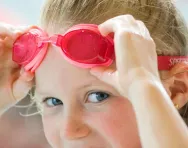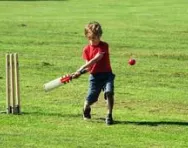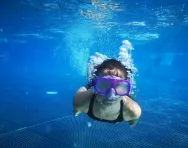TheSchoolRun.com closure date
As we informed you a few months ago, TheSchoolRun has had to make the difficult decision to close due to financial pressures and the company has now ceased trading. We had hoped to keep our content available through a partnership with another educational provider, but this provider has since withdrawn from the agreement.
As a result, we now have to permanently close TheSchoolRun.com. However, to give subscribers time to download any content they’d like to keep, we will keep the website open until 31st July 2025. After this date, the site will be taken down and there will be no further access to any resources. We strongly encourage you to download and save any resources you think you may want to use in the future.
In particular, we suggest downloading:
- Learning packs
- All the worksheets from the 11+ programme, if you are following this with your child
- Complete Learning Journey programmes (the packs below include all 40 worksheets for each programme)
You should already have received 16 primary school eBooks (worth £108.84) to download and keep. If you haven’t received these, please contact us at [email protected] before 31st July 2025, and we will send them to you.
We are very sorry that there is no way to continue offering access to resources and sincerely apologise for the inconvenience caused.
Help! My child doesn’t want to go on school swimming lessons

What level of swimming ability must students have?
Swimming and water safety is a statutory part of the National Curriculum, with the aim that by the age of 11 (the end of key stage 2) all pupils should be taught to:
- pace themselves in floating and swimming challenges related to speed, distance and personal survival
- swim unaided for a sustained period of time over a distance of at least 25 metres
- use recognised arm and leg actions, lying on their front and back
- use a range of recognised stroke and personal survival skills (such as front crawl, backstroke, breaststroke, sculling, floating and surface dives)


Boost Your Child's Learning Today!
- Start your child on a tailored learning programme
- Get weekly English & maths resources sent direct to your inbox
- Keep your child's learning on track
So, schools have a number of responsibilities in providing a swimming programme (though 45 per cent of primary school children are unable to swim 25 metres despite it being a national curriculum requirement), and the ASA – the governing body for swimming in England – offers guidance and advice on delivering these programmes in the best and safest way.
What if my child is afraid of the water?
If you don’t have happy memories of swimming lessons as a child, knowing that your child must learn to swim can be stressful enough. But, if your child is also a bit water-wary, it may leave you wondering whether they’ll have the same negative experience that you did.
The good news is that there are a few easy steps you can take to try to make water less scary for your child. The ASA has information for parents about swimming and children, and recommends the following:
- Encourage your child to get their hair and face wet at bath/shower times.
- Visit a swimming pool regularly to add to your child’s swimming experience.
- Go swimming together as a family, or with a group of friends to ensure that swimming is a fun, enjoyable and social activity.
- Sign your child up for additional swimming lessons from a local facility
What if my child is still afraid of the water?
If your child is still hesitant to do more than splash around the shallow end when it’s time for their first swimming lesson at school, don’t worry – swimming teachers are prepared for this. Here’s a sneak peek at what teachers do when a child is reluctant to participate in a class:
- Let the student observe the lesson from the poolside.
- Involve the student in the swimming lesson by having them help the teacher.
- Speak to the student to discuss and agree the task they need to achieve, however small it is.
- Make sure swimming is fun and enjoyable by using a games-led approach to learning to swim.
- Praise each small task that is achieved.
What procedures must my child’s school comply with?
According to the ASA, the school should ensure that a nominated member of staff is given the responsibility of swimming coordinator, which means they’ll also apply the swimming pool safety policy and procedures in the school. This includes the proper operation of the school’s own swimming facility or use of another pool, as well as monitoring and keeping records of the following documents and procedures:
- risk assessments
- pool safety operation procedures (Normal Operating Procedure (NOP) and Emergency Action Plan (EAP))
- monitoring of staff training and maintaining records of qualifications
- all swimming-related communications to staff
- conditions of pool hire
- liaising with the school swimming provider
Schools must also consider their responsibilities for other areas such as teacher-to-pupil ratios, lifeguards, other adults involved in the swimming programme, and what qualifications are required. The ASA provides training in the delivery of a primary swimming programme to all school staff (teachers, classroom assistants, learning support staff, nurses, swimming teachers, parents, trainee teachers, etc.). The ASA’s National Curriculum Training Programme (NCTP) for the Certificate for Teaching School Swimming (key stages 1 and 2) teaches the right skills to ensure school children receive the best quality aquatics education.
If you have any questions about your school’s swimming policy, staff training and learning objectives, you can speak to your child’s teacher and ask to see the school’s NOP and EAP documents.
You can also contact the ASA on [email protected], and visit the ASA website for further swimming information.
You can find details of what swimming events are happening at your local pool on the Poolfinder.








